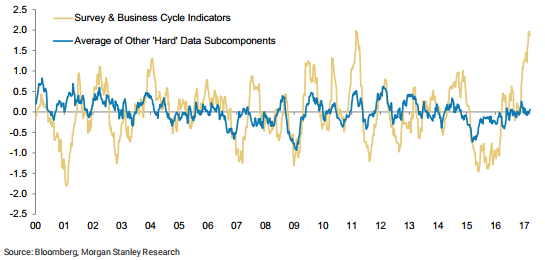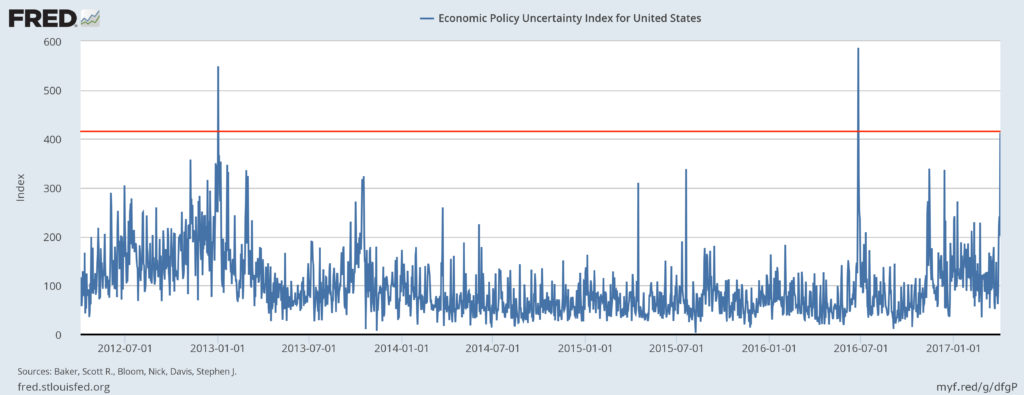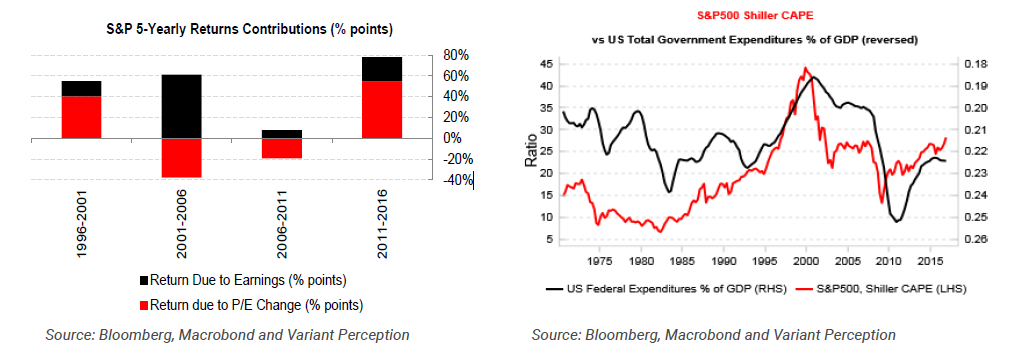Market Narrative Makes for Record Gap between Hope and Reality
There is just no escaping the reality that markets are driven by narratives and people are highly trainable – just ask Dr. Ivan Pavlov. For years investors have been trained to believe that markets cannot go down because central bankers will step in and do something that will prop them back up. This has essentially become a self-fulfilling prophecy. The most recent narrative has been the Trump reflation and economic acceleration trade in which narrative versus reality has reached a whole new level of wackiness.
As reported in the Financial Times recently, Morgan Stanley has found a record gap between the hard and soft US economic data, which is the difference between sentiment and reality.
The difference between quantifiable data and reports based on sentiment has never been so wide, prompting a sharp divergence in expectations for first-quarter US economic growth, according to an analysis by Morgan Stanley.
Source: Morgan Stanley flags ‘record gap’ between hard and soft US economic data
The prevailing narrative, as we head into earnings season, is that businesses are full of optimism and animal spirits are taking hold of the economy with robust growth right around the corner.
Apparently, those animal spirits aren’t looking to borrow to pay for that accelerating growth. It is possible that some businesses are holding off on borrowing until we learn what changes might be made to the tax code, but such a profound decline in borrowing does not support the assertion that businesses are gearing up for accelerating growth. This does support our Asset-Lite Business Models investing theme, as in such uncertain times, businesses look to limit long-term investments and focus just on those areas they can deliver value with minimal investment risk.
Investors have learned since the financial crisis that betting on the market going down is a fool’s errand as central bankers have stepped in every time to prop asset prices back up. We learned, oh did we learn. The markets now trade within a very tight band, with median volatility in 2017 lower than 95% of all trading days going back nearly 30 years and yet there is this. Note that the red line denotes the level on April 3rd, 2017. Only two other times in the past 5 years has uncertainty been this high yet the VIX is lower than 95% of all trading days over the past 30 years? I’d say those bears have learned to ignore the bell of weakening fundamental data.
Those watching the fundamentals and thinking that meant something had their shorts handed to them as the bulls smugly wagged their knowing fingers. The market will not go down, it will not go down I say… until the day the market sees what is behind that magic curtain.
Perhaps this might start to lift that curtain just a tad.
This chart shows that in recent years US equity price increases have been driven by rising PE ratios rather than improving business fundamentals, much more so than in years past where PE ratio shifts, in contrast, were often a drag on returns. What we found particularly interesting is the relationship between increases in government spending and PE ratios. The Trump Trade expects an increase in fiscal stimulus. That means increased government spending which has historically been associated with falling PE ratios – something to keep in mind as we watch the battles in D.C.
Looks to us like bonds are also thinking this accelerating growth/reflation story may not be quite right.
10 Year Treasury Rate data by YCharts
Your Tematica team will be watching carefully as this narrative gets tested further and will keep you posted when meaningful events occur, so stay tuned!






